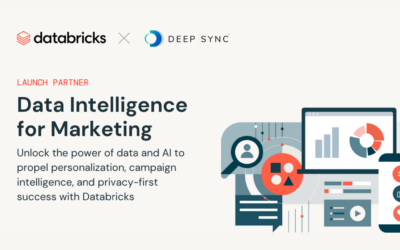We live in interesting times. Between a slew of evolving regulatory changes, Google’s back-and-forth stance (and ultimately unsurprising decision) on third-party cookie deprecation and ongoing signal loss, marketers are forced to operate with reduced access to consumer data.
Now more than ever, we must rethink our data-driven strategies to achieve our goals.
One side effect of all the confusion is that we are in danger of blurring the lines between two significant challenges: addressability and identity.

The nuance around addressability and identity
Addressability refers to the number of individuals that can be reached through a campaign. The more identifiers related to an individual, the better.
In the predigital era, addressability was achieved through mailing lists that enabled 1:1 communications with target consumers. With the explosion of programmatic advertising and the advent of third-party cookies, marketers suddenly had access to large, albeit mostly unknown, addressable audiences for their campaigns.
Now that third-party cookies are, at the very least, going to be severely limited going forward, brands and agencies need to find alternative, durable methods for addressing their desired audiences. This is no small task.
Identity resolution, on the other hand, refers to taking a single piece of consumer information and connecting it to a comprehensive profile of that consumer, forming a more complete view of the individual or even the household. This requires strong connection points between digital identifiers and the person or household (e.g., email, phone, IP address, mobile ad ID) where the accuracy of those linkages matter.
An identity resolution service is only as good as the foundational data it is built upon. Identity resolution is, in fact, not addressability optimization.
Identity and addressability in action
The reality is that identity resolution is hard. Millions of consumers move or update their contact details each year, meaning the minute you collect data from a consumer, it’s at risk of becoming stale. Resolving back to a known individual or household with accuracy and scale is therefore dependent on a deterministic truth set that keeps up with constant changes. Simply having billions of anonymous signals is not enough to complete the picture or keep it fresh.
Identity resolution is the necessary foundation upon which addressability is built. It should work alongside probabilistic identifiers to expand the prospecting audience as much as possible. If a marketer asks, “Is my audience size big enough when resolved deterministically? Or do I need to add probabilistic or modeled solutions to boost scale?” they can resolve to a known identity with deterministic linkages to find out. Anchoring audience addressability strategies to a stable, real-world ID means better downstream outcomes.
What’s the takeaway? Much like the direct-mail practices of the past, marketers should start with a deterministic view of the world, then focus on hygiene and enrichment to ensure precision while preventing waste. This will provide an anchor point from which to build and scale – first for identity, then for addressability, one powering the other.
Even modern use cases like clean room collaboration, modeling and AI depend on clean, accurate data as the foundation. What’s old is indeed new again.
For more articles featuring Paul Turner, click here.

This article was originally published on the AdExchanger Content Studio: “When It Comes To Addressability And Identity, What’s Old Is New Again“












0 Comments